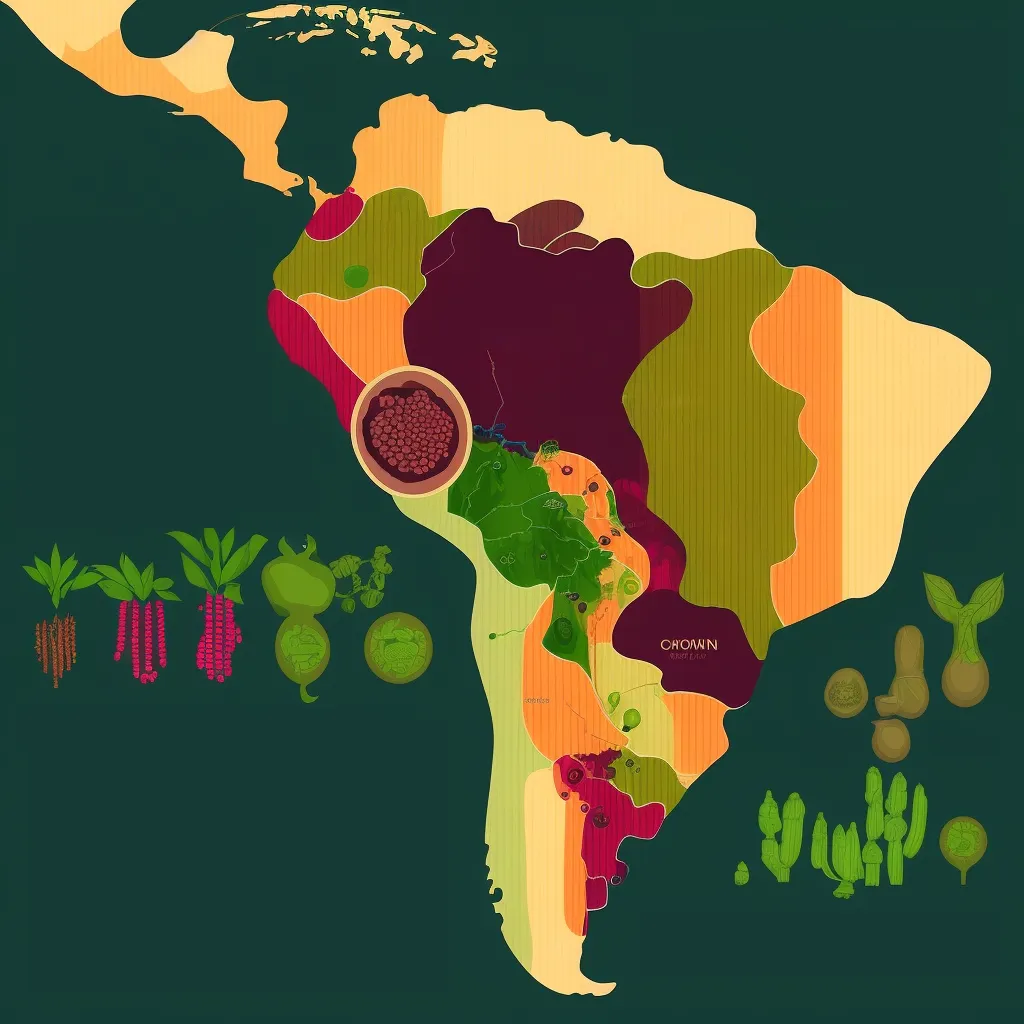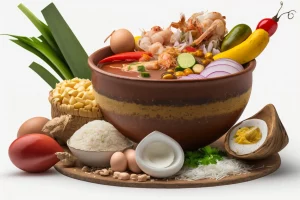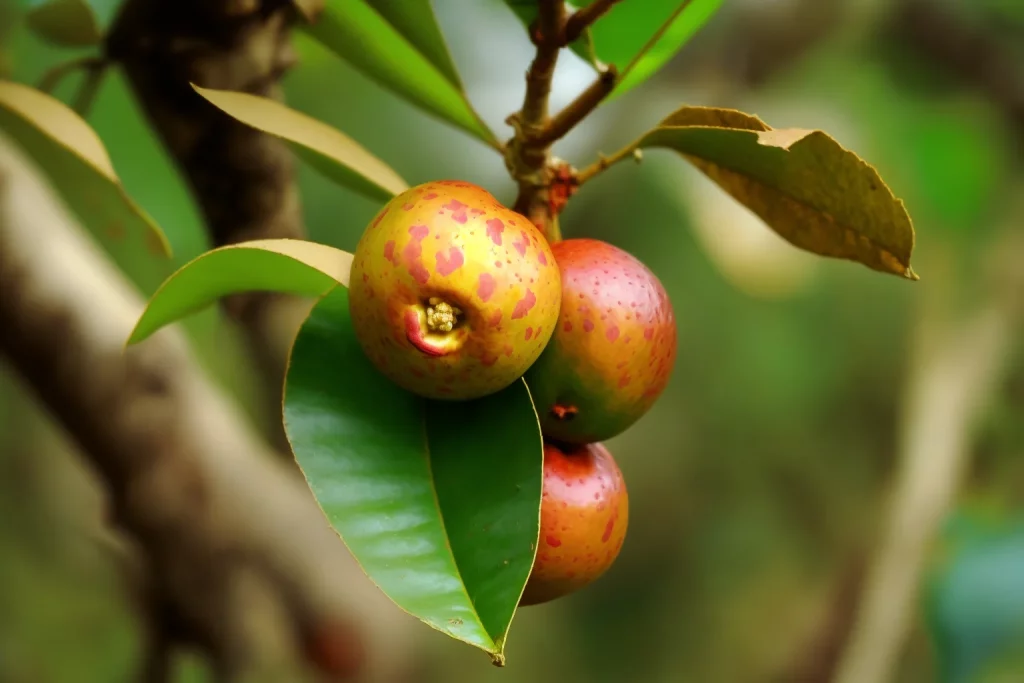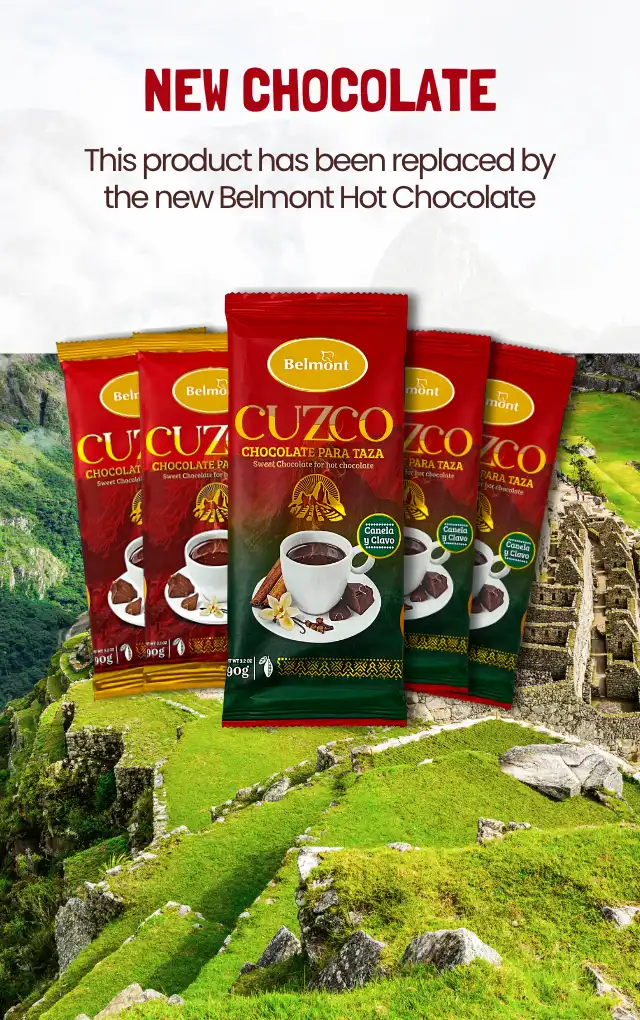The Peruvian Camu Camu
Camu camu is a fruit that grows in the Amazon rainforest and is widely known for its high concentration of vitamin C. The fruit is about the size of a cherry and has a bright reddish-purple color. Camu camu has gained popularity in recent years due to its many health benefits and versatility in cooking.
Brief history and origins of camu camu
Camu camu has been used for centuries by indigenous communities in the Amazon rainforest. The fruit was traditionally consumed as a way to boost the immune system and treat various ailments. In the 1950s, camu camu began to gain attention from researchers due to its high vitamin C content. Today, camu camu is grown commercially in Peru, Brazil, and other countries in South America.
Importance of camu camu in Peruvian cuisine and culture
Camu camu has long been an important ingredient in Peruvian cuisine and culture. The fruit is used in a variety of dishes, including juices, desserts, and sauces. In addition to its culinary uses, camu camu is also an important part of traditional medicine in Peru. The fruit is believed to have anti-inflammatory and antioxidant properties, making it a popular natural remedy for various health issues.
Physical Characteristics of Camu Camu

Camu camu is a small, cherry-sized fruit that is native to the Amazon rainforest in Peru and Brazil. It has a bright reddish-purple color and a tangy, sour taste. The fruit is known for its high concentration of vitamin C, which is more than 60 times that of an orange.
- Size, Shape, and Appearance of the Fruit: Camu camu fruit typically ranges in size from 1 to 3 centimeters in diameter. It is round to slightly oval in shape and has smooth, glossy skin. The flesh of the fruit is pulpy and contains small, hard seeds.
- Growing Conditions and Natural Habitat of Camu Camu: Camu camu trees require warm, humid climates with abundant rainfall. They grow in flooded areas, such as swamps and riverbanks, and can reach up to 15 meters in height. The fruit ripens from January to June, with the peak harvest season in March and April.
Where does it come from?

Camu camu is a small, bushy tree that grows in the Amazon rainforest of Peru, Brazil, Colombia, and Venezuela. The tree can grow up to 16 feet tall and produces small, round, purple-red fruit.
Growing conditions and natural habitat of camu camu
Camu camu grows naturally along rivers and floodplains in the Amazon rainforest. It thrives in wet, swampy areas with acidic soil and abundant sunlight..
Cultivation and harvesting of camu camu

- The farming process
Camu camu is cultivated primarily in the Amazon basin, where it is grown in flooded fields or swamps. Farmers use a mix of compost and soil to create mounds in the water, which act as planting beds for the camu camu trees. The trees are grown from seeds or cuttings and take about three years to mature.
- Sustainable harvesting methods
To ensure the long-term sustainability of camu camu, farmers use selective harvesting methods, which involve only picking ripe fruit and leaving unripe fruit on the tree to mature. This helps to maintain the health of the trees and ensures a continuous supply of fruit. Additionally, many farmers have adopted organic growing methods to minimize the use of pesticides and fertilizers.
What does camu camu taste like?
Camu camu has a unique flavor profile that is difficult to describe. The fruit is tart and tangy, with a slight sweetness and a high acidity level. Some describe it as having a lemony or citrusy taste, while others compare it to a mix of cherry, lime, and grapefruit.
In Peruvian cuisine, camu camu is primarily used in beverages and desserts. Its tartness makes it a popular ingredient in refreshing drinks, such as juices and smoothies. It is also used to add a tangy flavor to ice creams, sorbets, and other sweet treats.
Culinary uses of camu camu in Peruvian cuisine
In Peruvian cuisine, camu camu is a popular ingredient in traditional dishes and recipes. It is commonly used in ceviche, a dish made with raw fish marinated in citrus juice. Camu camu is also used to add a tangy flavor to sauces, marinades, and dressings.
In recent years, chefs have begun to experiment with camu camu in modern interpretations and variations of traditional Peruvian dishes. For example, some chefs have incorporated it into savory dishes, such as grilled meats and fish. Others have used it to add a unique flavor to cocktails and other alcoholic beverages.
So camu camu is a versatile ingredient that can be used in a variety of culinary applications. Its unique flavor profile adds a refreshing and tangy twist to traditional dishes, while its nutritional benefits make it a popular ingredient in health-conscious recipes.


How to use camu camu in cooking
Camu camu is a versatile ingredient that can be used in a variety of dishes and preparations. Here are some ways to incorporate it into your diet:
A. Different ways to incorporate camu camu into your diet
- Fresh vs. powdered camu camu: Fresh camu camu can be difficult to find outside of the Amazon region, but powdered camu camu is readily available and can be used in a variety of ways.
- Sweet vs. savory dishes: Camu camu’s tart flavor pairs well with sweet dishes like smoothies, as well as savory dishes like sauces and marinades.
B. Recipe ideas and inspiration
- Smoothies and juices: Camu camu adds a tangy twist to smoothies and juices. Try blending it with other fruits like pineapple, mango, or banana for a delicious and nutritious drink.
- Sauces and marinades: Camu camu can be used to add flavor and acidity to sauces and marinades for meats or vegetables. Try mixing it with soy sauce, ginger, and garlic for a flavorful marinade.
- Desserts and snacks: Camu camu’s tart flavor also works well in desserts and snacks. Try using it in a yogurt parfait or mixing it with honey and nuts for a delicious and healthy snack.
Nutritional content of camu camu
Camu camu is a nutrient-dense fruit that is packed with vitamins and minerals. In this chapter, we’ll explore the nutritional content of camu camu and how it compares to other fruits.
Vitamins and minerals present in camu camu
Camu camu is known for its high vitamin C content, which is an essential nutrient that plays a crucial role in maintaining a healthy immune system. In fact, camu camu has more vitamin C than any other fruit on the planet. It also contains other antioxidants like polyphenols and flavonoids that help protect the body from damage caused by free radicals.
In addition to vitamin C, camu camu is also rich in other vitamins and minerals such as vitamin A, vitamin E, iron, calcium, and potassium. These nutrients help support healthy bones, teeth, and skin, and also aid in proper nerve and muscle function.
Comparison of nutritional content to other fruits
Compared to other fruits, camu camu has a much higher concentration of vitamin C and antioxidants. For example, 100 grams of camu camu contains around 2,800 to 3,000 milligrams of vitamin C, while the same amount of oranges contains only 50 milligrams of vitamin C.
Health benefits of camu camu
Camu camu is also considered a superfood due to its high nutrient density. It has been found to have more antioxidants than other superfoods like acai berries and goji berries.
Incorporating camu camu into your diet can provide a range of health benefits, such as boosting your immune system, reducing inflammation, and improving overall health and wellness.
Overview of the Potential Health Benefits:
- Immune-Boosting Properties: Camu camu is known for its high content of vitamin C, which is important for boosting the immune system. It is believed that camu camu may help prevent infectious diseases and protect the body against the harmful effects of free radicals.
- Anti-Inflammatory Effects: Camu camu also contains flavonoids and other antioxidant compounds that have anti-inflammatory properties. These compounds have been shown to reduce inflammation in the body, which may help prevent chronic diseases such as heart disease and diabetes.
- Skin Health Benefits: The high vitamin C content of camu camu may also have benefits for skin health. Vitamin C is necessary for the production of collagen, an essential protein for skin health. Additionally, the antioxidants in camu camu may help protect the skin against damage from the sun and other environmental factors.
Scientific Evidence Supporting the Health Benefits:
- Results of Clinical Studies and Trials: A 2018 study found that camu camu had antioxidant and anti-inflammatory properties that could help prevent non-alcoholic fatty liver disease (NAFLD) in mice. Another study found that camu camu had anti-inflammatory properties that could help reduce pain and inflammation in people with rheumatoid arthritis.
- Expert Opinions and Reviews: A 2017 review of the potential health benefits of camu camu concluded that the fruit had antioxidant and anti-inflammatory properties that could help prevent chronic diseases. However, it was noted that more studies were needed to confirm these benefits and determine the optimal dose of camu camu.
Where to Find It?
- Health Food Stores: Camu camu has gained popularity as a superfood in recent years, and many health food stores now carry supplements and products that contain fruit. Look for camu camu powder, capsules, and juices in the supplement aisle of your local health food store.
- Online Retailers: If you don’t have access to a health food store that carries camu camu, you can also find it online. There are many online retailers that sell camu camu supplements and products, including Amazon, iHerb, and Vitacost. herein. Peruchos Food, we have a dehidratated Pisco Sour Mix of Mango and Camu Camu
- Skincare Products: Camu camu is also becoming a popular ingredient in skincare products due to its high vitamin C content and antioxidant properties. Look for skincare products that contain camu camu extract or oil to help brighten and protect your skin.



